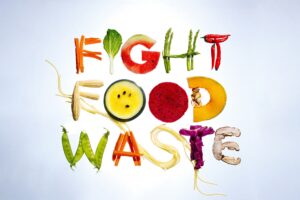Reducing Food Waste
go.ncsu.edu/readext?928492
en Español / em Português
El inglés es el idioma de control de esta página. En la medida en que haya algún conflicto entre la traducción al inglés y la traducción, el inglés prevalece.
Al hacer clic en el enlace de traducción se activa un servicio de traducción gratuito para convertir la página al español. Al igual que con cualquier traducción por Internet, la conversión no es sensible al contexto y puede que no traduzca el texto en su significado original. NC State Extension no garantiza la exactitud del texto traducido. Por favor, tenga en cuenta que algunas aplicaciones y/o servicios pueden no funcionar como se espera cuando se traducen.
Português
Inglês é o idioma de controle desta página. Na medida que haja algum conflito entre o texto original em Inglês e a tradução, o Inglês prevalece.
Ao clicar no link de tradução, um serviço gratuito de tradução será ativado para converter a página para o Português. Como em qualquer tradução pela internet, a conversão não é sensivel ao contexto e pode não ocorrer a tradução para o significado orginal. O serviço de Extensão da Carolina do Norte (NC State Extension) não garante a exatidão do texto traduzido. Por favor, observe que algumas funções ou serviços podem não funcionar como esperado após a tradução.
English
English is the controlling language of this page. To the extent there is any conflict between the English text and the translation, English controls.
Clicking on the translation link activates a free translation service to convert the page to Spanish. As with any Internet translation, the conversion is not context-sensitive and may not translate the text to its original meaning. NC State Extension does not guarantee the accuracy of the translated text. Please note that some applications and/or services may not function as expected when translated.
Collapse ▲Did you know that households throw away $640 worth of food each year? April is Financial Literacy Month & April 16th is Earth Day- what better way to celebrate both than looking into our food waste! In the U.S., over 37 million tons of food are wasted each year. That’s a lot of food that ends up in landfills instead of on plates.
Most people probably don’t realize how much food they are actually wasting. The sliced bread that got moldy before you finished it; the leftover meatloaf that you meant to bring for lunch, but didn’t; the forgotten cucumbers that are hiding in the back of the produce drawer.
Some simple ideas that can make a big impact include:
- Make a plan before you go grocery shopping. Have a list with the food items and the amount you need for the meals you plan to make.
- Check your pantry before going shopping so you don’t buy ingredients that you already have.
- Properly store your produce. (See the next article for a helpful resource that might help answer questions about how to properly store produce).
- Prep foods after you purchase them, so you can use them for snacking and cooking throughout the week. For example, remove the rind from large fruits such as pineapple and melons, cut them into chunks and place in air tight storage containers in the fridge so it is ready and easily eaten.
For a complete list of tips and other resources about reducing food waste, check out the EPA’s website.
Article from the More in My Basket team.




